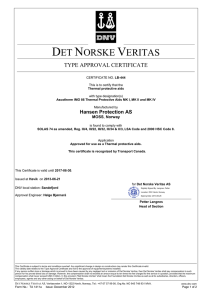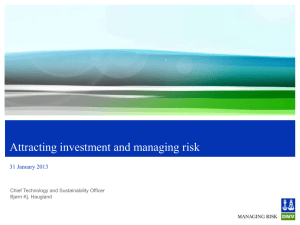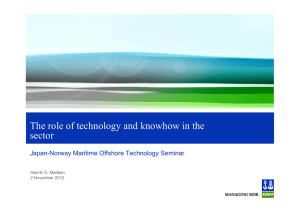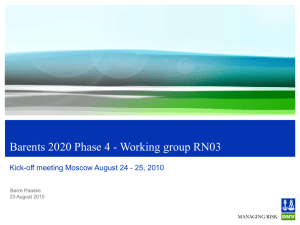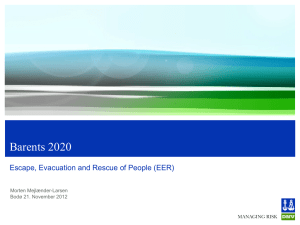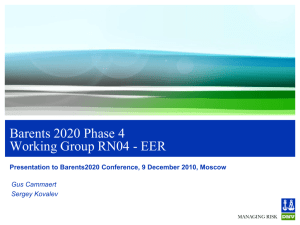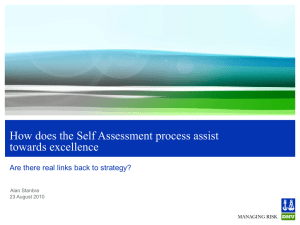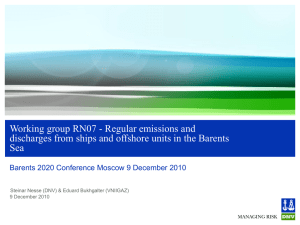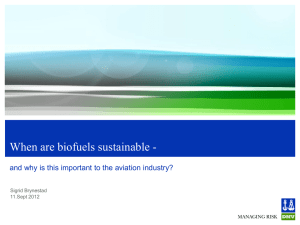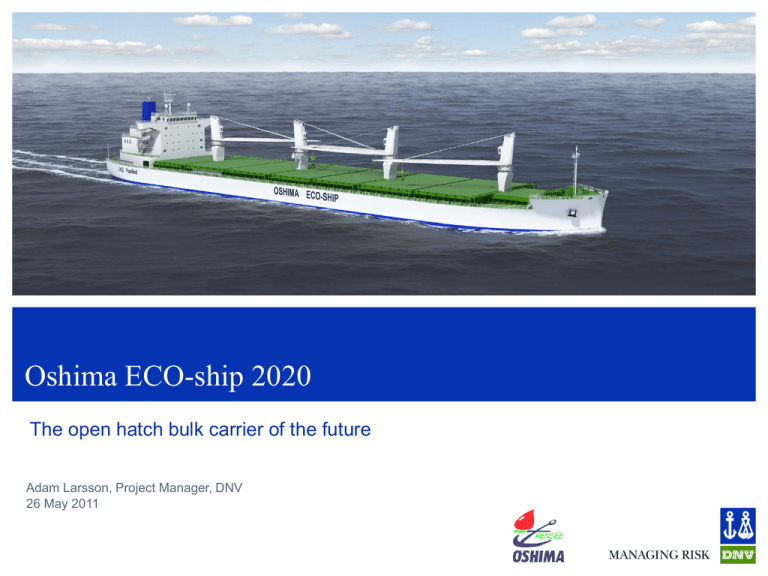
Oshima ECO-ship 2020
The open hatch bulk carrier of the future
Adam Larsson, Project Manager, DNV
26 May 2011
Oshima ECO-ship 2020 - Objectives
Environmental friendly
Energy efficient
Cost-effective
Flexible operations
Oshima ECO-Ship 2020
26 May 2011
© Det Norske Veritas AS. All rights reserved.
2
Design basis
Market and logistics study
- Basis for selection of main particulars and technical solutions
Operational profiles and trading routes identified
- Basis for fuel consumption calculations
Open Hatch Bulk
Carrier segment:
-
Many port calls
Pulp trades
Few ballast voyages
Average load level 77%
Oshima ECO-Ship 2020
26 May 2011
© Det Norske Veritas AS. All rights reserved.
3
Concept overview
Main features:
-
LNG fuelled – LNG as only fuel on board
Wide air lubricated twin skeg hull
Flexible propulsion and power generation systems
Waste heat recovery
Composite hatch covers
Large capacity electric deck cranes
Oshima ECO-Ship 2020
26 May 2011
© Det Norske Veritas AS. All rights reserved.
4
Hull
Optimised to fit operational profile
Wide twin skeg hull
Seaworthy Bow
Air lubrication
Flipper fins
Reduced fuel consumption
Low total resistance
- Calm water
- Waves
High propulsive efficiency
Oshima ECO-Ship 2020
26 May 2011
© Det Norske Veritas AS. All rights reserved.
5
LNG fuelled
LNG only, no fuel oil for propulsion or power generation
Fully compliant with existing and future expected emission requirements
-
ECA and EU port regulations
IMO Tier III regulations
No SOx and particulate emissions
Significant reductions of CO2
Clean working environment
No risk for accidental oil pollution
LNG tank location in aftship
4 C-type pressurised tanks
Total tank capacity 3,000 m3
Oshima ECO-Ship 2020
26 May 2011
© Det Norske Veritas AS. All rights reserved.
6
Machinery and propulsion systems by Rolls-Royce Marine
2 lean-burn 4-stroke medium speed gas engines, 2 x 4,000 kW
1 auxiliary gas engine, 1 x 1,400 kW
Hybrid Shaft Generators, PTI/PTO mode
Frequency converters
Waste heat recovery
PROMAS, integrated propeller and rudder
Low fuel consumption
High energy efficiency
Twin screw redundancy
Flexible propulsion and power generation
Excellent manoeuvrability
Oshima ECO-Ship 2020
26 May 2011
© Det Norske Veritas AS. All rights reserved.
7
Operational solutions
All-electric deck machinery
Composite materials
Large capacity electric jib cranes, 4 x 75t
Hatch covers
High cargo handling efficiency
Reduced energy consumption
Significant weight reduction
Easy handling by deck crane
(no hydraulic systems)
Less maintenance
Oshima ECO-Ship 2020
26 May 2011
© Det Norske Veritas AS. All rights reserved.
8
The ECO-Ship is commercially viable
Compared to a conventional Oshima
OHBC, the ECO-ship requires an
additional investment of about 23
MUSD
This extra investment is expected to
be earned back within 10 years
The ECO-ship improves the
expected net present value before
tax by 38 MUSD over a lifetime of 25
years
Oshima ECO-Ship 2020
26 May 2011
© Det Norske Veritas AS. All rights reserved.
9
Concluding remarks
Environmental friendly
-
-
No emissions of SOx or particulates
90% NOx reductions
CO2 reductions of at least 50%
compared to base case
Energy efficient
-
Cost-effective
Flexible operations
-
LNG fuelled
Waste heat recovery
Electric deck machinery
Oshima ECO-Ship 2020
26 May 2011
© Det Norske Veritas AS. All rights reserved.
10 years pay-back time
Improved lifetime net present value
of 38 MUSD
10
Machinery and propulsion system
Large capacity deck cranes
Composite hatch covers
Safeguarding life, property
and the environment
www.dnv.com
Oshima ECO-Ship 2020
26 May 2011
© Det Norske Veritas AS. All rights reserved.
11

